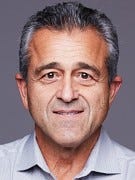IT Service Providers Get Boot Camp in Recurring Revenue Growth
The program will become a complete two-day workshop in quarter four of this year.
August 31, 2022

MSP expert Len DiCostanzo has had a long career, working for more than 30 years as a channel executive. DiCostanzo describes himself as “dynamic” and a “visionary” who has established effective strategies and processes to accelerate company and partner revenues and profitability.
And he wants to share those strategies with attendees of this year’s MSP Summit. During his session, ‘Managed Service Accelerator Program: Grow Recurring Revenue,’ DiCostanzo will describe what makes recurring revenue critical for a managed services practice.

MSP Toolkit’s Len DiCostanzo
“I have worked with IT service providers (ITSPs) just getting started building their managed services business, or those still in the process of building, as well as mature ITSPs still looking to improve, and I reinforce these issues as they apply to all,” DiCostanzo told Channel Futures. “Certainly, one of the keys to improving and maintaining your operational maturity level is to follow a process of continuous improvement to always be working on becoming more efficient and automated at delivering the outcomes clients want and expect.”
History of Recurring Revenue
DiCostanzo offers a historical tutorial about recurring revenue business, which managed services have based their business model on since inception.
Keep up with all of the speakers, exhibitors and content at the MSP Summit. The event, Sept. 13-16, in Orlando, also features the all-new Channel Partners Leadership Summit. It’s not too late to register! |
Initially, the break-fix model utilized by ITSPs was the predominant model before managed services, but was fraught with issues. Time spent on service delivery had to be tracked properly, billed efficiently and collected on time. This rarely ever happened and resulted in cash flow and profitability issues for ITSPs.
This led these service providers and the industry to develop and adopt the managed services recurring revenue business model. Time tracking is eliminated, at least in terms of being tied to invoicing. The billing process and collections are much more efficient. As a result, ITSPs now have a predictable revenue stream and are more profitable.
Business Transformation Stages
However, getting to profitability means there are many key transformation stages as an ITSP to build their managed services practice.
DiCostanzo focuses on five key stages:
Define the services you will deliver in a comprehensive service catalog inclusive of service details. And does it continue to follow a service catalog management process.
Work through exercises with your finance team to properly understand your costs of service delivery. Determine the profits you want to generate. Don’t price based on the competition or what you think your clients will pay as this will ensure you are not in business too long.
Build your managed services team as you fly the plane. Put the key pieces in place to start based on the services you will be delivering and tools you will be using. Seek out vendors with service delivery capabilities or partners who can deliver services you can’t while you ramp up.
Target your best clients first for your new offerings and work your way to penetrate as much of your client base as possible.
Satisfied with your ability to sell and deliver managed services to your clients? Use your managed services to hook new logo business. You don’t have to sell your new client everything at once. Start out selling a service that meet the prospects need, do a great job, then expand your wallet share.
DiCostanzo plans to launch the MSP accelerator program as a complete two-day workshop in the fourth quarter of this year. Participants will be able to register and attend online. But you can get a jump-start by attending his session at the MSP Summit, Sept. 13-16, in Orlando.
Want to contact the author directly about this story? Have ideas for a follow-up article? Email Claudia Adrien or connect with her on LinkedIn. |
Read more about:
MSPsAbout the Author
You May Also Like


